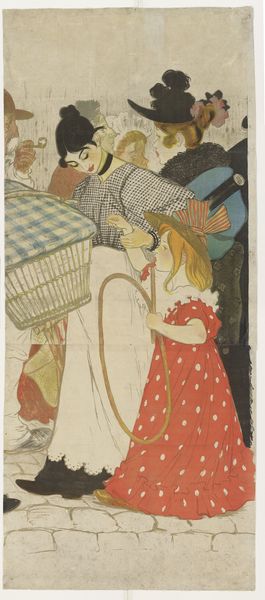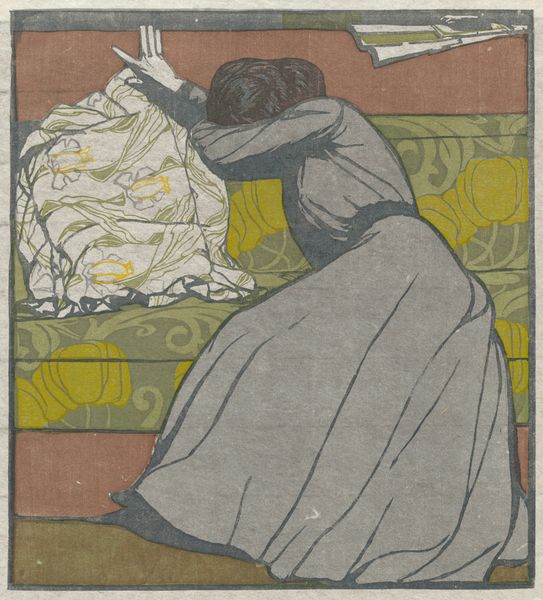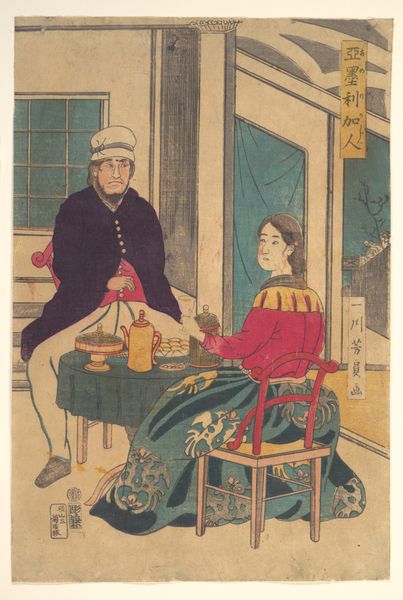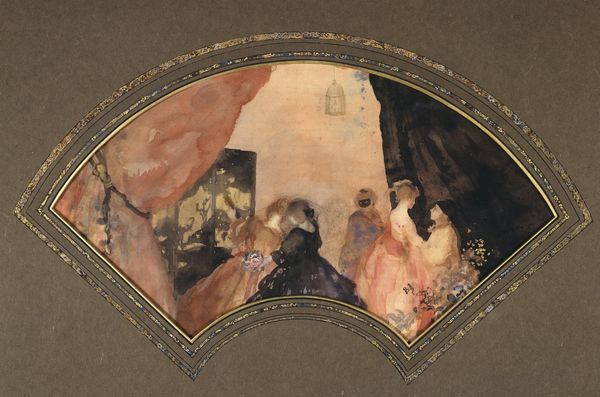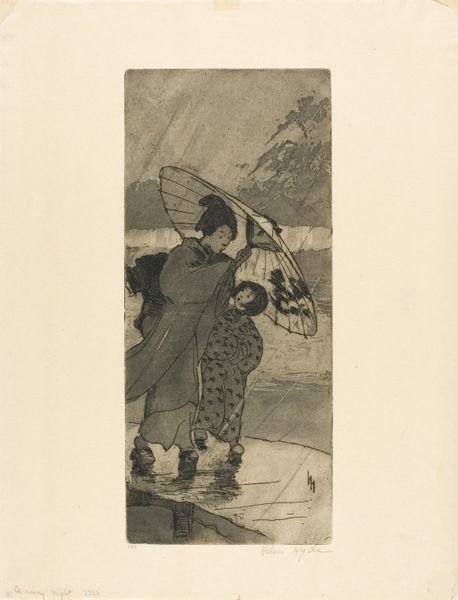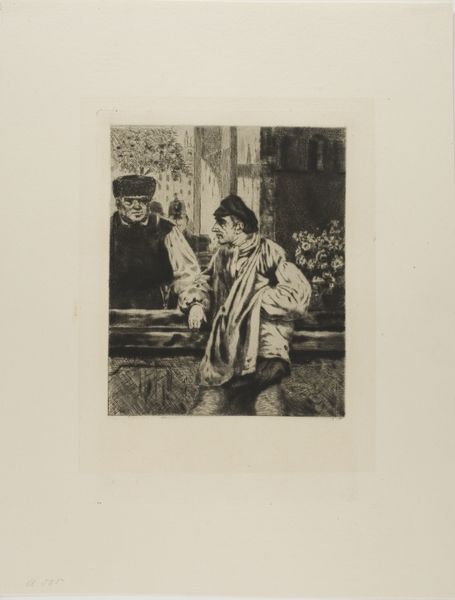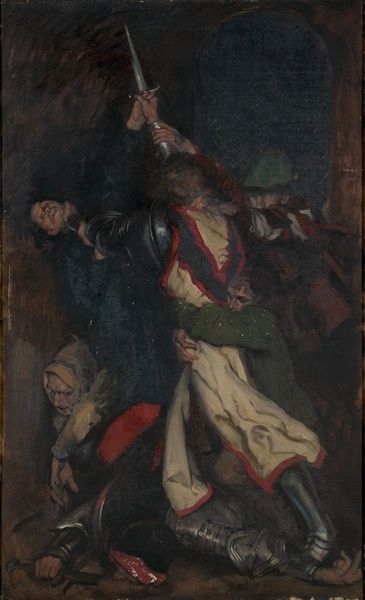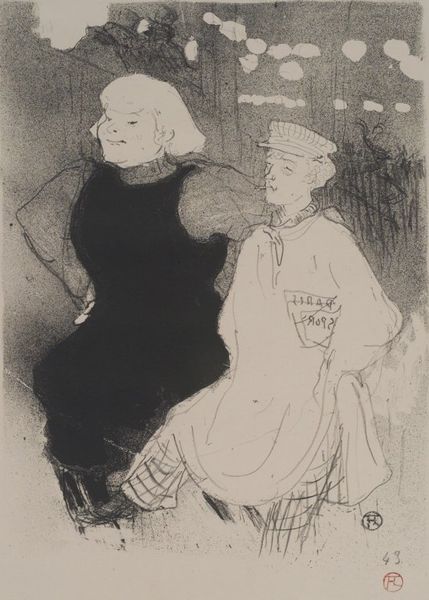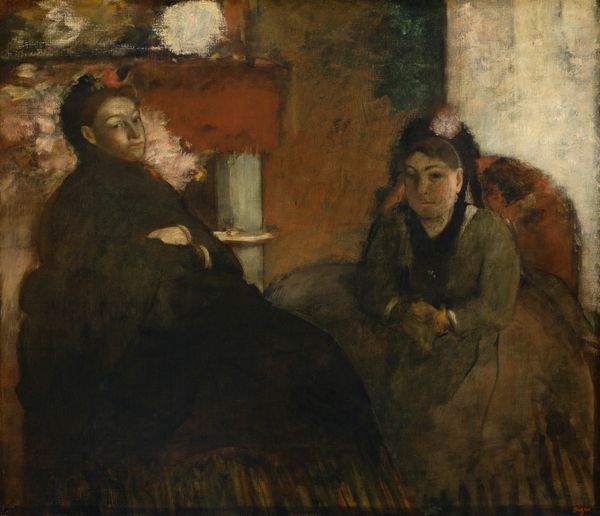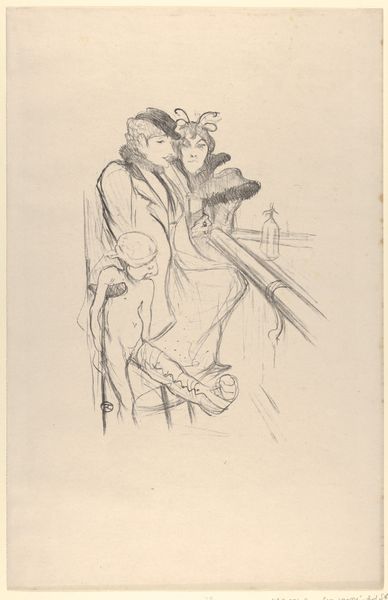
Dimensions: support: 356 x 330 mm
Copyright: CC-BY-NC-ND 4.0 DEED, Photo: Tate
Editor: So, this painting is "The Last of England" by Ford Madox Brown. It's this poignant image of a couple on a ship, rendered in oil on panel. The figures are so close to us; I immediately sense a feeling of melancholy resignation. What do you see in this piece? Curator: Oh, that melancholy hits me too. It's like peering into a Victorian snow globe of sorrow! Brown painted this reflecting on the waves of emigration leaving England. Look at the detail – the vegetables, the faces behind – each one a tiny story of loss. Are they hopeful, I wonder, or just bracing for the unknown? Editor: It's the unknown that gets me! It seems like a leap of faith. I wonder about their story. Curator: Exactly! And isn't that the magic? We project our own longings and fears onto them, making their journey our own, across time and tide. Editor: Absolutely! Thanks for that perspective; it has certainly given me a new appreciation for the piece.
Comments
tate about 2 months ago
⋮
http://www.tate.org.uk/art/artworks/brown-the-last-of-england-n03064
Join the conversation
Join millions of artists and users on Artera today and experience the ultimate creative platform.
tate about 2 months ago
⋮
Brown's picture shows a boat of emigrants as they pass the most westerly cliffs of southern England. This highly topical scene is given an added poignancy by the fact that it was stimulated by the emigration of Thomas Woolner, a fellow Pre-Raphaelite, who left for Australia in July 1852. The focus of the picture is the tragedy of exile for the middle-class couple (modelled by Brown and his wife), a theme reiterated in Brown's writings: 'The educated are bound to their country by quite other ties than the illiterate man, whose chief consideration is food and physical comfort'. This watercolour is a replica of an oil painting now in Birmingham. Gallery label, August 2004

